Solar power securing farmers future
“We’re lucky we have other strings to our bow in battling the drought – it wouldn’t have been pretty without an off-farm income.” – David Mailler
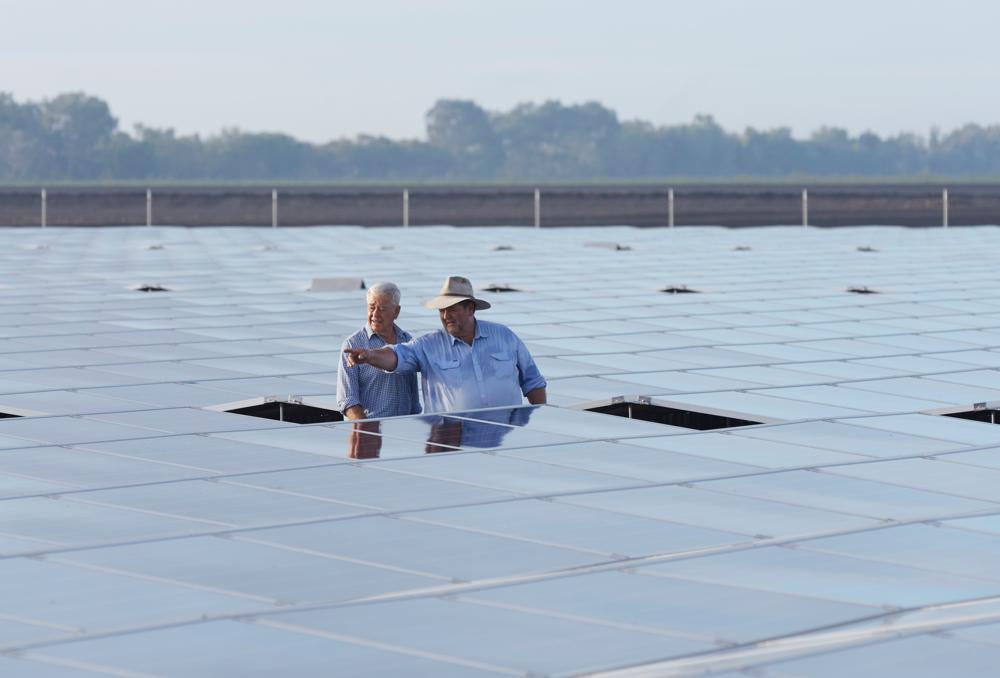 David Mailler, to the right, with his father Michael at their Chillamurra solar farm at Boggabilla in North West NSW. Photo by: Nick Cubbin.
The story
David Mailler, to the right, with his father Michael at their Chillamurra solar farm at Boggabilla in North West NSW. Photo by: Nick Cubbin.
The story
IN our first issue, May 2018, we reported on livestock and grain farmer David Mailler in ‘
Solar power: the sky’s the limit’ who went from university graduate to world-class solar farmer in less than a year. His family-run solar farm construction business switched on its first privately funded 4.77 megawatt (MW) solar farm, Chillamurra at Boggabilla in North West NSW, in June 2017.
With a bit of practice up their sleeves, David’s father Michael and brothers Robert and Peter then set up a 11.9MW solar farm, Dunblane in Barcaldine, Queensland, later that year.
The next chapter
David’s renewable energy vision has gone from strength to strength with another three solar farms underway across the country – one at Collarenebri, North West NSW, one in Mildura, Victoria and another for a group of chicken farmers at Baroota, South Australia, all set to be complete by midyear.
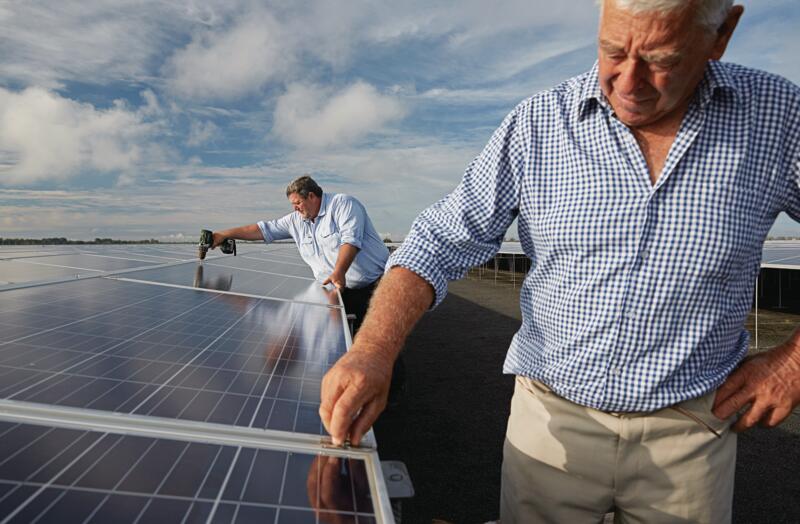 David with his father Michael (foreground) manage the day-to-day operations and maintenance of the solar farm, including performing regular checks of the solar panels. Photo by: Nick Cubbin.
David with his father Michael (foreground) manage the day-to-day operations and maintenance of the solar farm, including performing regular checks of the solar panels. Photo by: Nick Cubbin.
Becoming a NSW Farmers board member last year was one of David’s highlights – a really positive experience and an eye-opener, he says.
“Quite often you can sit on your own patch and pontificate about everyone’s woes. This has given me a real insight into a wide variety of industries across the state and the challenges,” David says.
The drought is the greatest challenge with four to five years of sub-par rainfall, tough springs and winters, he says.
“De-stocking our mixed farming operation in Uralla has helped protect the ecology of the property.” – David Mailler.
“In March last year, we cut our stock to half ahead of winter,” says David. “We continued to sell off sheep through the summer as the season tightened to this autumn. We are now at a quarter of our normal stocking rate.
“We’ve managed to get some chickpea gratings (pod and split grain) from my brother’s winter crop clean up – they’re ideal for sheep feed for the winter. We’re lucky we have other strings to our bow in battling the drought – it wouldn’t have been pretty without an off-farm income.”
RELATED ARTICLES ON SOLAR POWER:
-
Solar panels on farm dams cutting energy costs
-
Why solar stacks up for farmers
-
Renewable energy to combat electricity costsLupin farmer flourishing with health food products
“We’ve been constrained a little by the fact we haven’t been able to get our flakes gluten-free, so we’re building our own steaming and toasting mill.” – Gary Drew
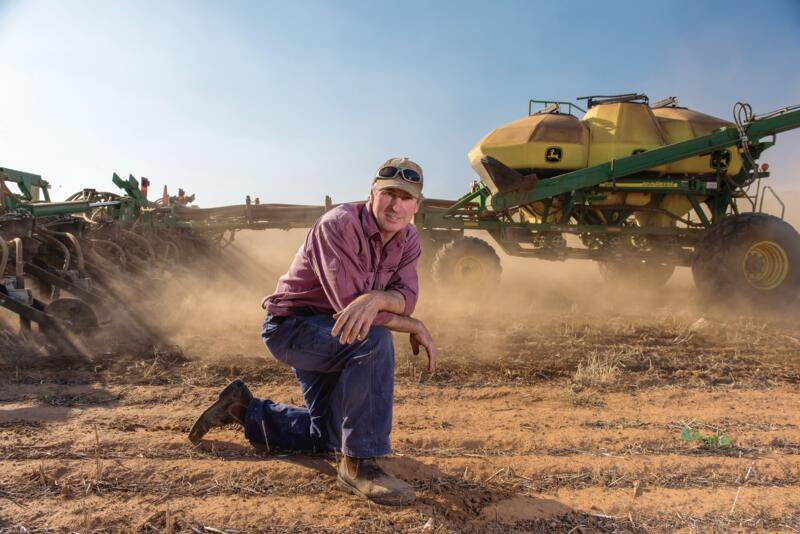 Gary Drew overseeing the planting of an albus lupin crop at Brocklesby in the southern Riverina. Photo by: Simon Bayliss.
Gary Drew overseeing the planting of an albus lupin crop at Brocklesby in the southern Riverina. Photo by: Simon Bayliss.
The story
In our July 2018 issue, in
‘Is lupin the new superfood?’ brothers Roger and Gary Drew told of their plans to produce a range of ‘superfoods’ from flours to breakfast flakes, all made from sweet albus lupins grown on their farm at Brocklesby in the NSW Riverina. After years of R&D and building their own mill from second-hand machinery, they spoke to us as they prepared to get their Lupins for Life products out to market.
The next chapter
Last July, the Drews launched their
online shop, selling lupin flours, semolina, crumb, kibble and their popular toasted breakfast flakes in their own-designed packaging. The website includes recipe ideas devised by Gary’s wife Heather in association with local chefs and cooks.
“Things are moving slower than we’ve hoped and we’ve been constrained a little by the fact we haven’t been able to get our flakes gluten-free, so we’re building our own steaming and toasting mill,” says Gary.
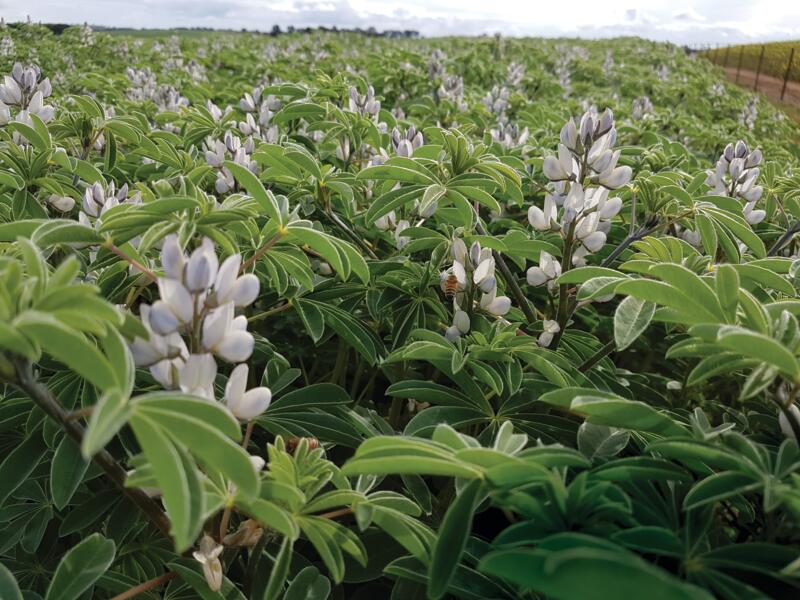 Albus lupin growing on the Drew’s farm in Brocklesby. Photo by Simon Bayliss.
Albus lupin growing on the Drew’s farm in Brocklesby. Photo by Simon Bayliss.
“To be gluten-free in Australia requires a way tougher set of standards than anywhere else in the world, but we see it providing us with a real point of difference.” – Gary Drew
He’s been excited by the readiness of local stores such as IGA to stock their products. “And we’ve also been steadily growing our wholesale customers, working with them on product development so we produce what they need,” adds Roger. “We’ve had particular success working with pasta and pizza companies who want low-gluten, low-carbohydrate options.”
The Drews were also a finalist in an Innovative Farmer of the Year award. “That was a bit of a buzz!” says Gary.
Cattle farmers positive about industry despite drought
“There’s definitely enough moisture there to get the grazing canola, oats and barley up. We’ll have plenty of feed for the livestock.” – Justin Dickens
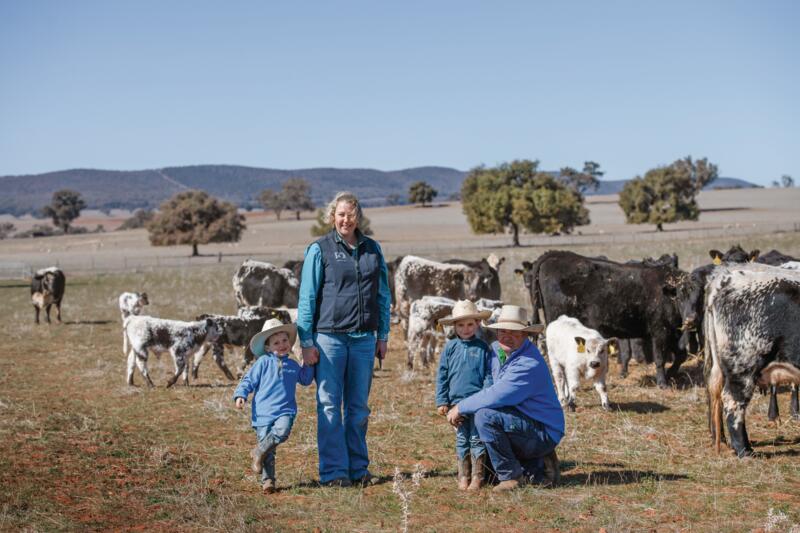 Amy and Justin Dickens check on some of their Speckle Park cattle with help from sons Mitchell and Jack. Photo by: Pip Farquharson.
Amy and Justin Dickens check on some of their Speckle Park cattle with help from sons Mitchell and Jack. Photo by: Pip Farquharson.
The story
The Dickens family won hearts in our October 2018 issue:
‘Tough lessons learnt: building resilience to drought’ with their inspiring story of raising a young family on their 1,020-hectare farm at Yeoval in Central West NSW. Justin and Amy Dickens told us they were monitoring the stress on all team members and learning how to build resilience. Back then, the region had just experienced one of its driest periods ever, despite historically being “pretty safe”. The family told us about their focus on Speckle Park cattle.
The next chapter
The Dickens farm Greenvale with their children Jack and Mitchell. They bought their previous farm in 2012, so this has been their first drought as landholders.
They bought their first Speckle Park bull the same year and have built up their herd. In October Justin said:
“Despite there being such a widespread dry period, markets are at unprecedented levels and so agriculture remains an exciting place to invest and raise a family.” – Justin Dickens.
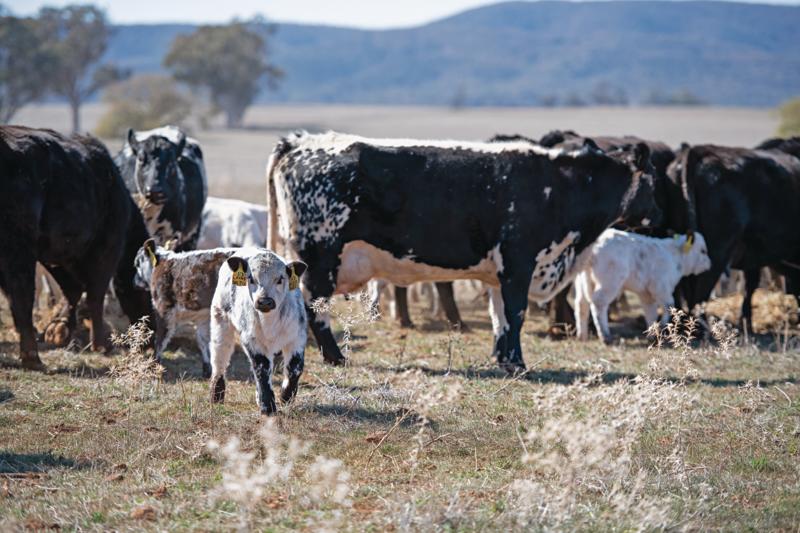 One of the Speckle Park calves. Photo by: Pip Farquharson.
One of the Speckle Park calves. Photo by: Pip Farquharson.
When The Farmer magazine interviewed Justin again in early April, he had good news as 70mm of rain had fallen in the previous six weeks.
“It’s a good start, but we need 100mm more to get good subsoil moisture,” he says.
Nevertheless, they’ve got 160 hectares of grazing canola and brassica into the ground, along with 130ha of oats and 100ha of barley.
“There’s definitely enough moisture there to get [the grazing canola, oats and barley] up,” Justin says. “The canola is already up and the pastures have responded well to rain. We’ll have plenty of feed for the livestock.”
RELATED ARTICLES ON DROUGHT:
-
Drought declarations: for or against?
-
The truth about the Murray-Darling
-
Climate change wreaking havocGoat meat fetching a big price with supply low
“We’ve de-stocked everything. We’re just going to sit back and wait until it rains now.” – Ross Gates
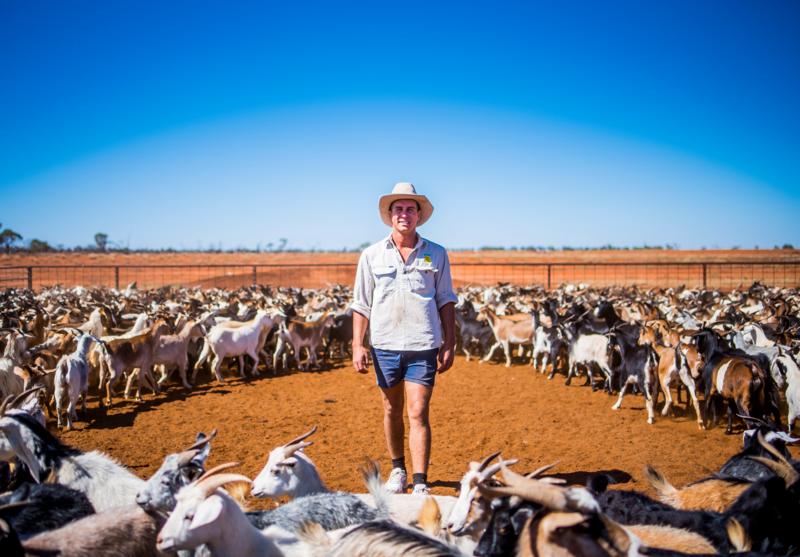 Ross Gates with his rangeland goats at Burndoo, 70km south-east of Wilcannia in Western NSW. Photo by: Samara Harris.
The story
Ross Gates with his rangeland goats at Burndoo, 70km south-east of Wilcannia in Western NSW. Photo by: Samara Harris.
The story
In the early 1990s, off the back of the wool floor price crash, Rick and Joanne Gates decided to sell their Merino sheep and build their rangeland goat business which has expanded to three properties in Western NSW. Their son Ross joined the business a few years ago and says it’s “good money” with global demand for goatmeat only increasing. We shared their story in our May 2018 issue – ‘
Going for growth with goats.’
The next chapter
In a good season the Gates sell up to 150,000 goats annually, but with only a few showers of rain last year and about 13mm this year, Ross Gates decided to de-stock their family property, Keelambara near Tilpa, in late March.
“We’ve de-stocked everything. We’re just going to sit back and wait until it rains now,” he says after trapping and selling 4,000 goats in March.
When The Farmer caught up with Ross in early April over the phone, he had his hands full chasing a mob of goats that he spotted on the go. He yarded all 200, no sweat.
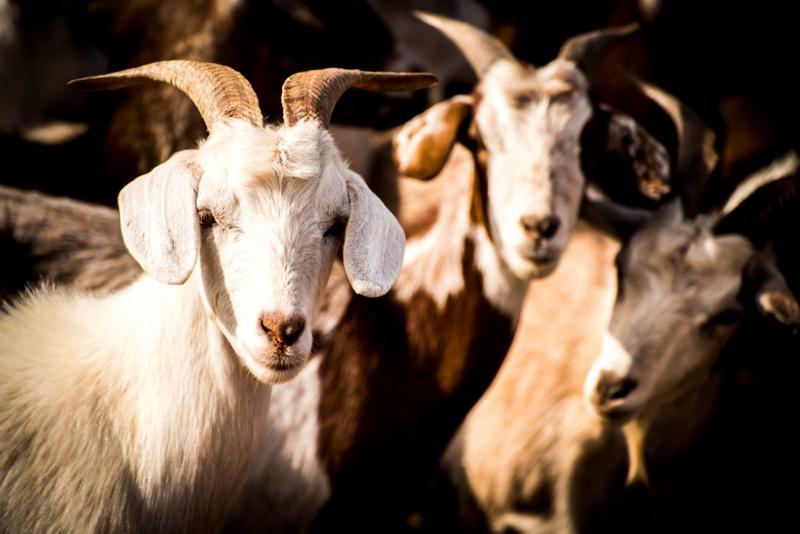 A rangeland goat on the Gates’ farm near Tilpa. Photo by: Samara Harris.
A rangeland goat on the Gates’ farm near Tilpa. Photo by: Samara Harris.
He says the market has gone up because the demand is there and the supply is down, with over-the-hooks prices reaching $7/kg for the bigger goats sold to an abattoir in Victoria. The smaller ones go to Charleville in Queensland.
“My biggest concern during drought is other people, our neighbours, not necessarily the business.” – Ross Gates.
He adds that there’s been great support in Western NSW. “One mob brought 7,000 litres of drinking water out here and another mob from Griffith brought watermelons, oranges, water and dog food.”
Community is really important, he says and a couple of bands have come to the Tilpa pub to put on a show. “It’s a good excuse to get everyone together.”
Alpaca farmer expanding through diverse business model
“We are shipping yarn to Germany and France, and to wholesalers in the US, with plans for expansion into Japan next.” – Angela Smith
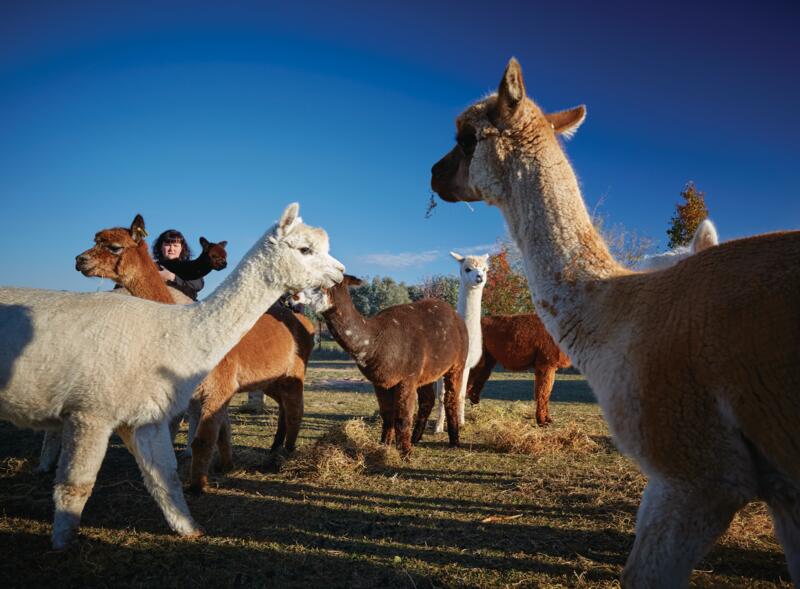 Alpaca breeder Angela Smith with her alpacas at her One Tree Hill farm in Murrumbateman. Photo by: Nick Cubbin.
Alpaca breeder Angela Smith with her alpacas at her One Tree Hill farm in Murrumbateman. Photo by: Nick Cubbin.
The story
When we profiled alpaca breeder Angela Smith in the August 2018 issue with the story
‘From fleece to farmed meat: How alpaca farmers are owning their niche,’ she was busily developing niche markets for her alpaca products. The co-owner of
One Tree Hill Alpaca Farm in Murrumbateman between Canberra and Yass in South East NSW, Angela had grown her herd to 70 mainly breeding female alpacas, producing and selling luxury alpaca fibre and yarn, opening a farm shop and adding alpaca meat to her offering – all the while watching the global market.
The next chapter
A lot has happened in just eight months. Angela and husband Matthew have diversified into hospitality and tourism, and 80 people visited the farm in the week The Farmer caught up with them in April. Exporting is also taking off.
Angela’s hand-dyed brand, Blackwattle Alpaca Yarn and Fibre, is growing in popularity in Australia and overseas since she launched a targeted export website a year ago.
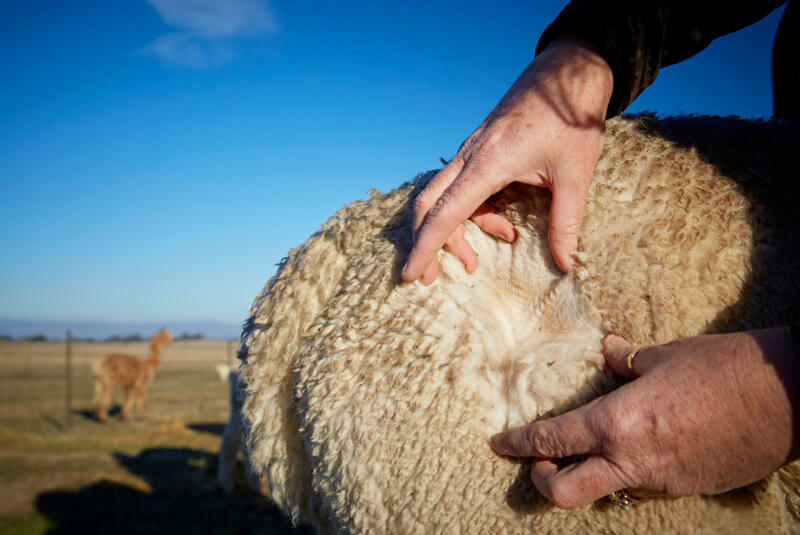 A close-up of the high quality alpaca fleece. Photo by: Nick Cubbin.
A close-up of the high quality alpaca fleece. Photo by: Nick Cubbin.
“With a new range of 48 standard, repeatable colours, we are shipping yarn to Germany and France, and to wholesalers in the US, with plans for expansion into Japan next,” Angela says.
The tourists to her farm can try everything from alpaca meat barbecues to yarn-dyeing workshops – but the star attraction is Canyon the llama.
“People love llamas. They’re so quirky and curious so they interact really well with people.” – Angela Smith.
Chicken farmers score valuable new contract
“I don’t even think about what Red Lea put us through. I’m just looking to the future.” – Stephen Lichtenberger
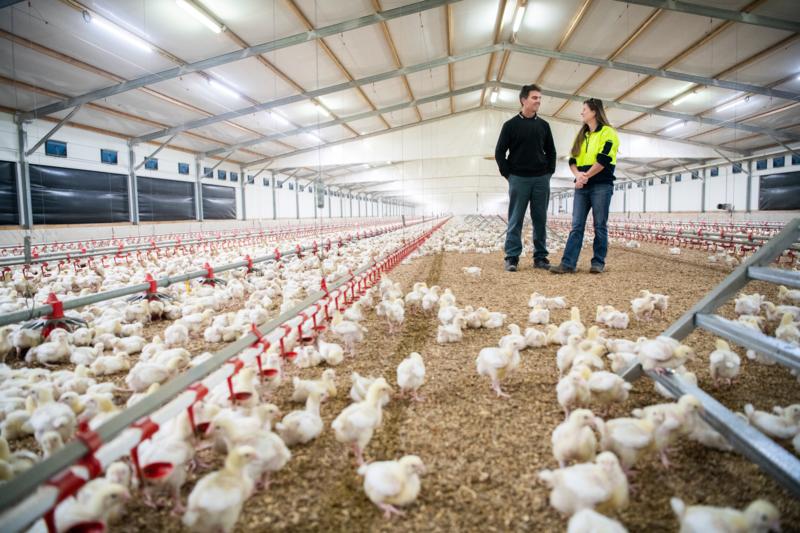
Chicken grower Stephen Lichtenberger and his wife Keely at their property at Marulan near Goulburn. Photo by: Rohan Thompson.
The story
Red Lea Chickens, one of the country’s largest chicken production businesses, went into voluntary administration in March last year, owing 28 NSW chicken growers more than $6 million in unpaid invoices, with little hope they would ever see any of their money. In our July 2018 issue: ‘
Investigating the Red Lea Chickens collapse,’ we spoke with one of those growers, Stephen Lichtenberger who runs Morland Farm at Marulan in South East NSW. He had been supplying Red Lea for 28 years and was owed $270,000.
The next chapter
A few weeks after Red Lea shut its doors, Stephen Lichtenberger was approached by another large chicken processor,
Cordina Farms, a family-owned company with 65 years’ experience in the poultry industry.
“I have signed a five-year contract to grow chickens for Cordina Farms on much the same basis as my agreement with Red Lea.” – Stephen Lichtenberger
“The volumes are probably a touch under those for Red Lea, but I am hoping that will increase as we continue to do business. I was lucky because Cordina had approached me on a couple of occasions before Red Lea went under, so they knew how I operated and that made for a seamless match-up. I don’t even think about what Red Lea put us through. I’m just looking to the future.”
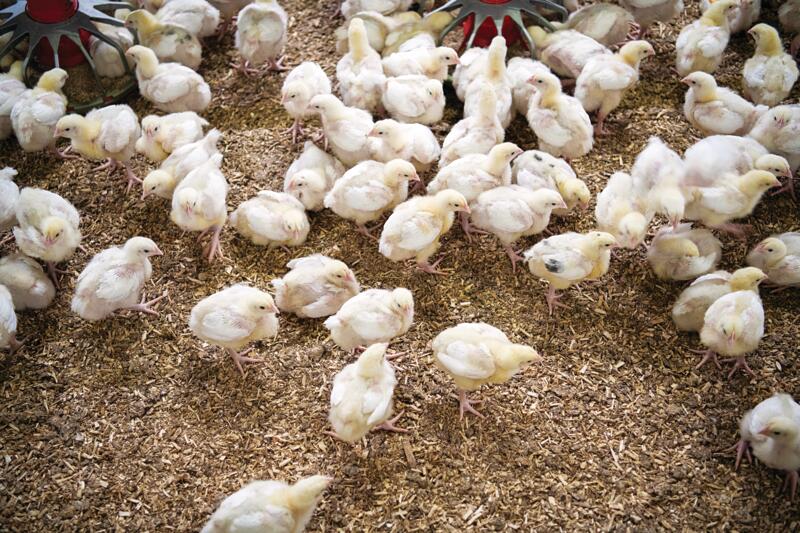 Baby chicks at Moreland Park. Photo by: Rohan Thompson.
Baby chicks at Moreland Park. Photo by: Rohan Thompson.
Just before Christmas last year, Stephen received a phone call from the Red Lea administrator telling him he would receive a payment of 15 cents in the dollar for the $270,000 owed to him, as well as a second “unspecified payment” before the end of this year.
“I honestly thought we’d never see anything, so to have 15 cents in the dollar in my hand is very welcome,” says Stephen. “I’ll be extremely interested to see what the promised second payment is, too.”
RELATED ARTICLES ON CHICKEN FARMING:
-
Inside the caged-egg vs free-range debate
-
Thriving egg business that isn't too chicken to change
Apple farming family thriving with award-winning ciders
“We’re leading the world with the Cider Australia trust mark as we’re the first country to do this.” – Jo-Anne Fahey.
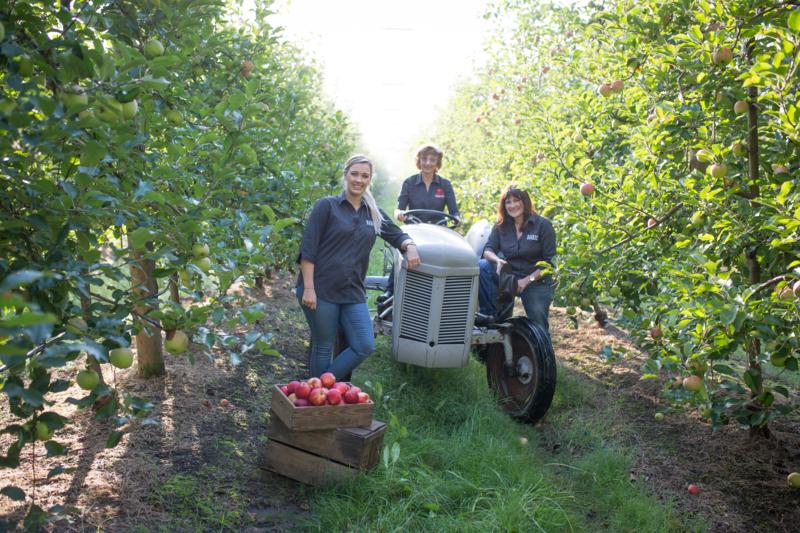
Three generations of the Fahey family from left to right: Casey, Ruth and Jo-Anne at their farm, Glenbernie Orchard, about 30km north of Wollongong. Photo by: Pip Farquharson.
The story
In our May 2018 issue, the Fahey family from
Glenbernie Orchard in South East NSW shared their concern about the falling prices they were receiving from supermarkets for their fruit. To ensure they remained viable, they were producing alcoholic and non-alcoholic ciders and investigating tourism possibilities. However, they were frustrated by the fact their ciders were competing with cheap imported products not even made with fermented fruit.
The next chapter
As low returns for fruit in the wholesale industry continued to bite, the Faheys found themselves driven further towards tourism and direct-to-customer sales.
In the past year, they’ve built two 25-seat tractor trailers for taking visitors on their interpretive farm tours. They also ferry pick-your-own customers.
The family has engaged a consultant to help with business planning and has also attended a wine tourism workshop in the Hunter Valley to help further develop an international visitor plan.
The Faheys are hoping interest will be boosted after they scooped a number of awards for their cider and apple cider vinegars, including a gold medal for their Howler cider in the World Cider Awards. They are also releasing their first ‘methode traditionelle’ cider and a new sparkling mead called B-Sting.
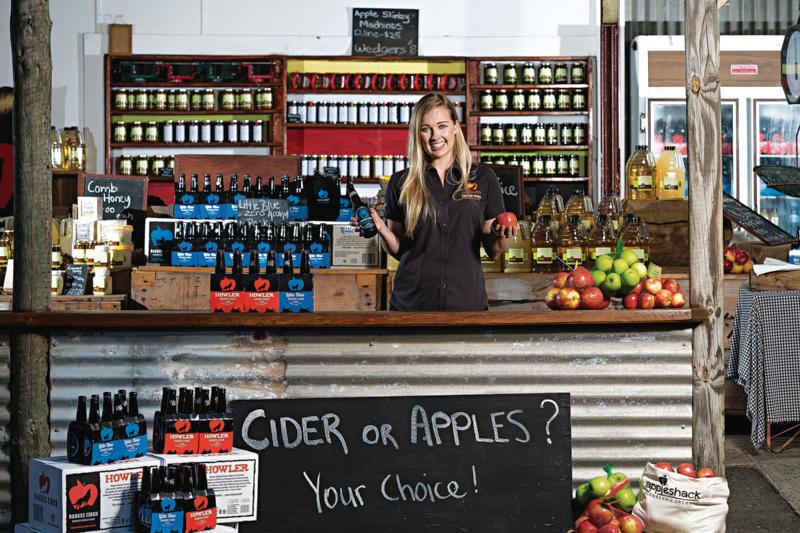
Casey Fahey in their shop, where you can buy award winning alcoholic apple cider or apple cider vinegars, amongst other things. Photo by: Anthony Warry.
Jo-Anne Fahey was particularly delighted that Cider Australia has released a trust mark to designate cider made with 100% Australian apples.
“We’re leading the world as we’re the first country to release a trust mark for cider made with 100% Australian apples.” – Jo-Anne Fahey.